
SCORM stands for Sharable Content Object Reference Model. It’s an e-learning industry standard that enables seamless content integration & interoperability across various LMS platforms.
A SCORM compliant LMS fully adheres to the SCORM standards. Ensuring seamless integration, interoperability & compatibility with SCORM-packaged e-learning content.
This means that the LMS software can accurately import, launch, track & report on SCORM-compliant courses. Thus, providing a consistent & reliable learning experience.
In this blog, we will explore the 9 best SCORM compliant LMS platforms. Along with their working, versions, benefits, limitations & a brief guide on selecting the right LMS for you.
9 Best SCORM Compliant LMS to Choose in 2025
Today, SCORM compliance has become a benchmark for LMS platforms. Here are the 9 best SCORM compliant LMS platforms.
1.Edmingle
Edmingle is a cloud-based LMS. It’s an innovative & user-friendly SCORM-compliant LMS. Offering a wide range of features & flawless integrations, it blends into your organizational requirements seamlessly. It supports SCORM version 1.2 and 2004 with built-in tracking features. Some of the highlights of this feature are:
- In-house SCORM player offering complete flexibility & deeper integration without any extra cost
- Enhanced ability to make SCORM files as a prerequisite for learners to move forward only after completion
- Seamless tracking of learner progress, quiz outcomes & the ability to resume from the last completed slide
Read more about this here.
To explore Edmingle’s capabilities in addressing your training needs & objectives;
2.CrossKnowledge
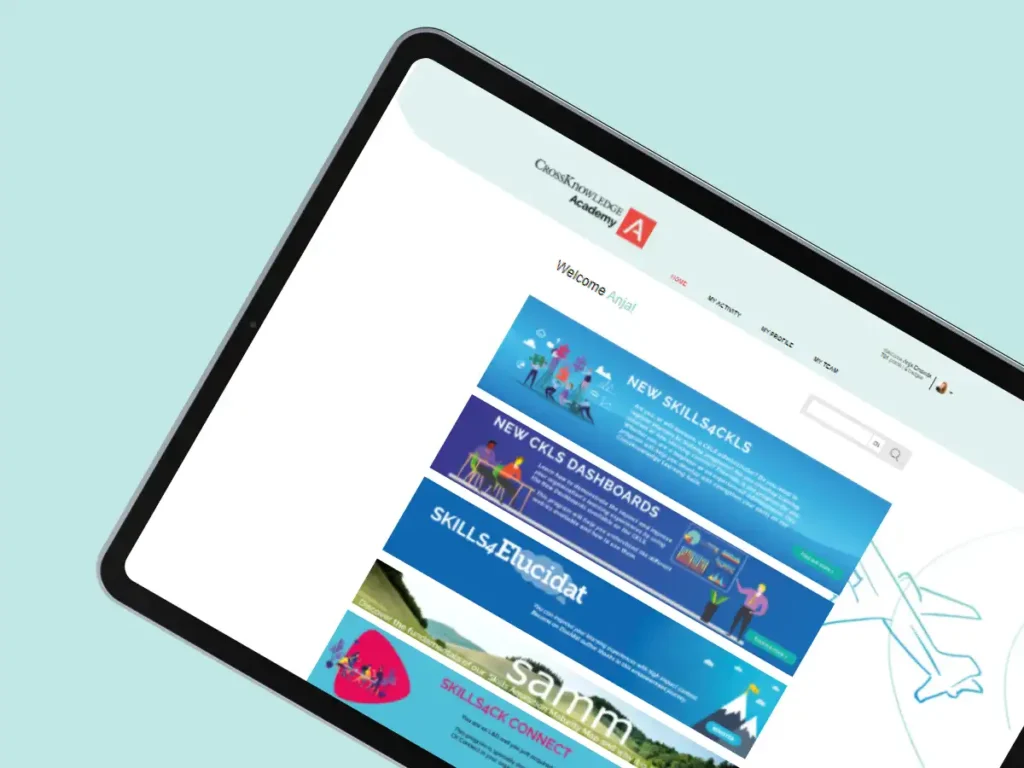
CrossKnowledge is a powerful SCORM-compliant LMS. It provides robust content management, personalized learning paths & advanced reporting capabilities.
3.Fuse
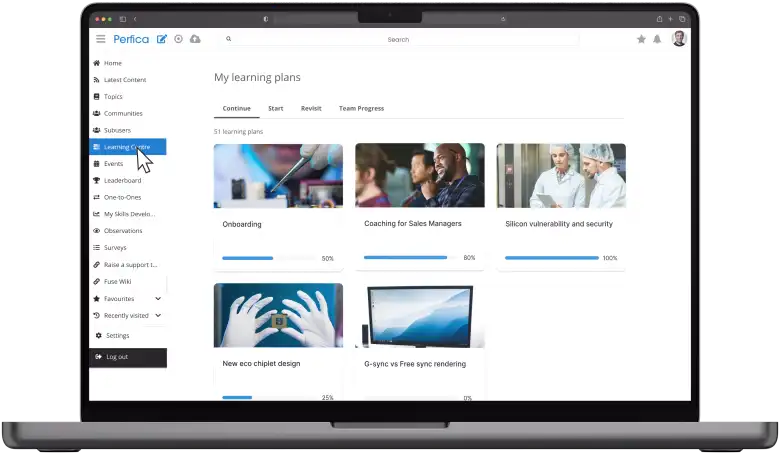
Fuse is a dynamic SCORM-compliant LMS. It focuses on social learning & user engagement. It integrates SCORM training content seamlessly while combining formal & informal learning.
4.Instancy
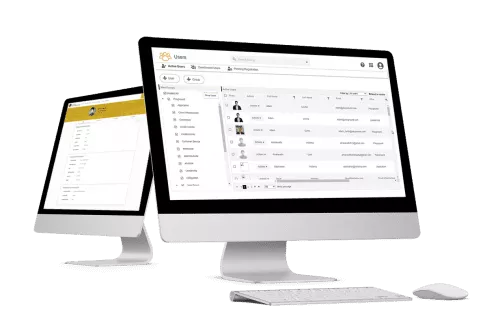
Instancy supports SCORM, ensuring compatibility & interoperability. It enhances the learning experience through interactive content, mobile device compatibility & detailed analytics.
Explore all the types of LMS platforms in our complete guide.
5.Knowledge Anywhere

Knowledge Anywhere is known for its ease of use & robust feature set. It supports the integration of SCORM content with customizable learning paths. It also offers detailed reporting & mobile-friendly access.
6.LearnUpon
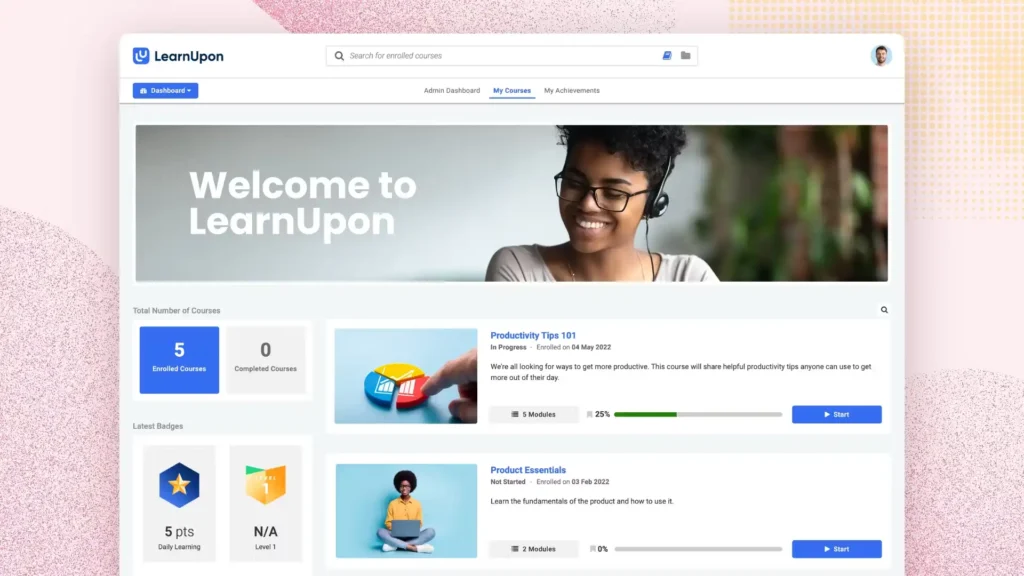
LearnUpon supports SCORM packages, ensuring compatibility with various e-learning standards. It is known for its intuitive user interface, powerful reporting tools & seamless integration capabilities.
Explore the curated list of best compliance LMS software.
7.Spoke LMS
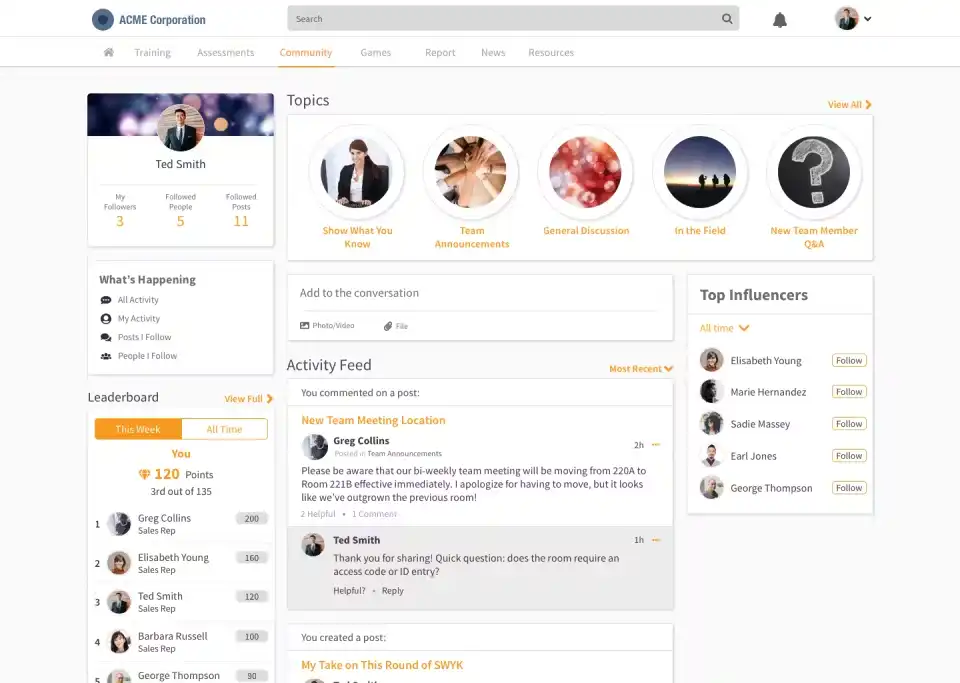
Spoke LMS focuses on enhancing learner engagement & knowledge retention. It supports the integration of SCORM content. It emphasises on user experience with features like gamification, social learning & advanced analytics.
8.SumTotal

SumTotal is a comprehensive SCORM-compliant LMS. Suitable for large organizations with diverse training needs. It stands out for it’s scalability, flexibility & focus on delivering measurable outcomes.
You might also like to read about the scalability & flexibility of SaaS LMS platforms.
9.Totara
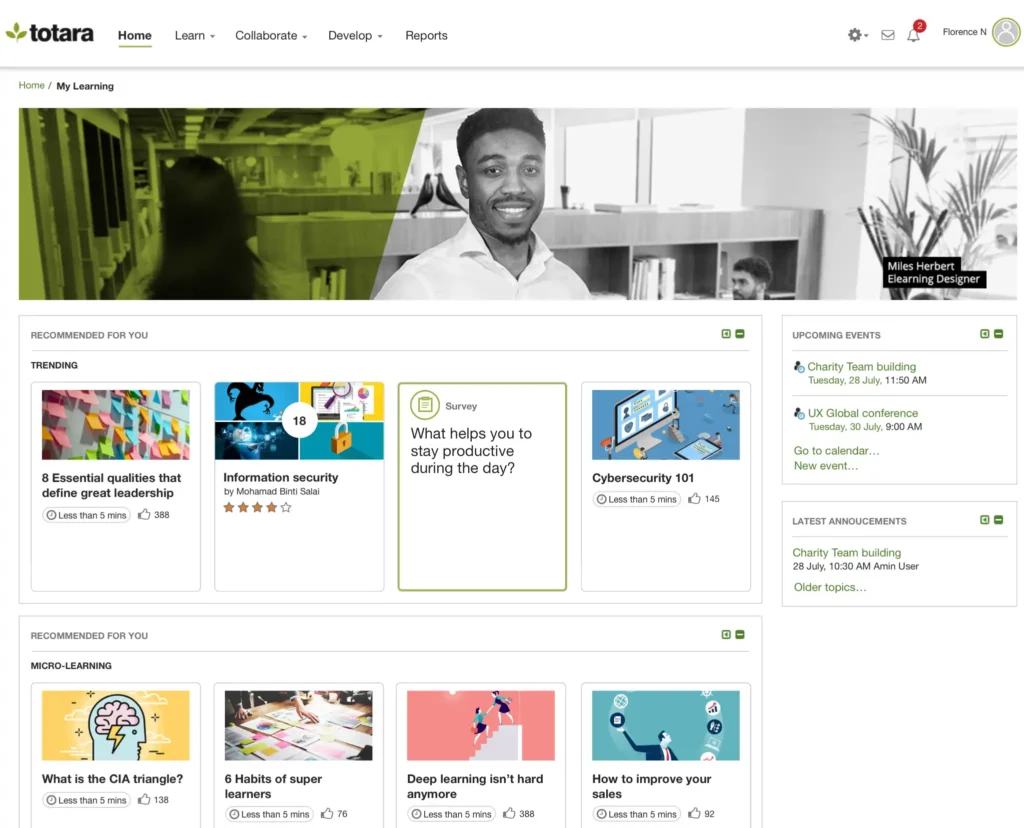
Totara is designed to meet the complex L&D needs of organizations. It supports SCORM packages with customizable learning paths, competency management & granular reporting. Its open-source nature allows for extensive customization.
How to Choose the Right SCORM Compliant LMS?

Choosing the right one involves evaluating several key factors. So as to ensure it proves to be an asset to your organization instead of being a liability. Here’s a step-by-step guide:
- Assess the platform’s compatibility with SCORM standards
- Consider the user experience, whether it is intuitive & easy to navigate for both administrators & learners
- Evaluate the features and functionalities
- Check for scalability & flexibility to accommodate future growth & diverse training requirements
- Consider the level of customer support & the availability of resources for employee onboarding & troubleshooting
- Review user feedback & case studies to gauge the LMS’s effectiveness in real-world scenarios
By carefully weighing these factors, you can make a selection that enhances your e-learning initiatives while driving successful learning outcomes.
Working of a SCORM Compliant LMS

SCORM operates through three main components:
- Content Packaging Specification: Ensures learning materials are bundled into a format as per technical standards. Typically a ZIP file, which the LMS can easily import & deploy.
- Run-Time Environment: Defines the communication protocols between the training material & the LMS. Enabling the tracking of learner interactions, progress & scores.
- Sequencing & Navigation: Governs the order in which learning activities are presented to the learner.
So when a learner accesses SCORM-compliant content, the LMS retrieves & launches the content. It then monitors the learner’s progress & records data. Thereby ensuring a seamless & consistent learning experience across different systems.
Also check our blog on the types of LMS integrations.
SCORM Types/Versions
SCORM 1.1
The first version of SCORM, it laid down the foundation for future development. It had limited adoption due to various technical limitations.
SCORM 1.2
This version became widely adopted. It provided better interoperability & included essential features. Such as metadata, content packaging & a robust run-time environment.
SCORM 2004
The most advanced version, it’s also known as SCORM 1.3. It introduced new features like sequencing & navigation. Allowing for more complex instructional designs.
SCORM 2004 2nd Edition
Improved error handling & better support for content aggregation models.
SCORM 2004 3rd Edition
Enhanced data model for more detailed tracking & reporting capabilities.
SCORM 2004 4th Edition
The final version of SCORM 2004, offers improved sequencing & navigation with better error handling.
Major Benefits of Using an LMS with SCORM Compliance
- Content can be shared & used across different platforms & online courses without compatibility issues
- Saves time & resources by ensuring streamlined content management
- Efficiently tracks learner progress & performance
- Easy content packaging & deployment, ensuring a consistent learning experience
- Support for complex instructional designers & designs
- Reduces the need for custom development & integration
- Ensures that content remains compatible with future SCORM-compliant systems & updates
- Offers advanced sequencing & navigation for more effective & engaging learning experience
- Saves cost in content creation & LMS management
Explore the best affordable LMS solutions in 2025.
Limitations of Using a SCORM compliant Learning Management System

Despite these benefits, there are certain cons that need to be discussed before moving ahead. Note that these aren’t roadblocks. With the right strategy, overcoming these becomes a piece of cake. Some of these are:
- Set up & configuration can be technically challenging & time-consuming
- SCORM has some limitations in supporting highly interactive & adaptive learning pathways
- The strict guidelines & structure can limit creativity & flexibility in course design
- SCORM content typically requires a stable internet connection. This can act as a barrier in low-connectivity areas.
- Implementing a SCORM-compliant system can involve significant upfront costs. Mainly for licensing and setup.
- Keeping the LMS & SCORM content up-to-date may require continuous maintenance & technical support
Explore all the core features of an LMS.
How to Create SCORM Courses?
Creating SCORM courses ensures your e-learning content is compatible with learning management systems (LMS). Follow these steps to build a SCORM-compliant course:
1.Plan Your Course Content
Define learning objectives, structure, and assessment criteria. Organize modules into logical sections (videos, quizzes, PDFs, interactive elements).
2.Choose an Authoring Tool
Use SCORM-compliant authoring tools like Articulate Storyline, Adobe Captivate, iSpring Suite, Lectora, or Elucidat. These tools help create engaging content with multimedia, quizzes, and interactivity.
3.Develop & Structure the Course
Create slides or interactive lessons using the selected authoring tool. Add quizzes, videos, simulations, and progress tracking features.
4.Export as SCORM Package
Once the course is ready, export it as SCORM 1.2 or SCORM 2004 format. Ensure the file is zipped, as LMS platforms require SCORM packages in ZIP format.
5.Upload to an LMS
Log into your SCORM-compliant LMS (e.g., Edmingle, Moodle, TalentLMS). Upload the SCORM ZIP package and configure tracking settings.
6.Test & Deploy
Preview the course within the LMS to check navigation, tracking, and completion reports. Ensure learner progress, quiz scores, and certificates function correctly.
7.Monitor & Optimize
Use LMS analytics to track engagement and course performance. Update content as needed to improve the learning experience.
Summary
A SCORM compliant LMS ensures that content is packaged, delivered & tracked efficiently. Thereby providing a consistent & reliable learning experience.
SCORM compliance also facilitates detailed tracking & reporting. When choosing the a SCORM LMS for your organization, consider the factors mentioned in this blog to make a well-informed decision.
Implementing an LMS with SCORM compliance can elevate your e-learning initiatives. By ensuring a standardized, efficient & engaging learning environment for all users.
FAQs on SCORM LMS
1.What are some alternatives to SCORM?
xAPI (Experience API or Tin Can API), AICC (Aviation Industry CBT Committee) and HTML5.
2.How to run a SCORM package?
Upload the SCORM package to a SCORM-compliant LMS. Then, launch it through the LMS interface to track & manage learning activities.
3.How to edit a SCORM package?
Use e-learning authoring tools to edit the SCORM package content & repackage it. For instance, Articulate Storyline, Adobe Captivate or iSpring.
4.Can you host SCORM packages without a SCORM LMS?
Yes, but you will lose tracking & robust reporting functionalities. You can even host them on a web server but an LMS is needed for full SCORM compliance.




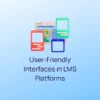
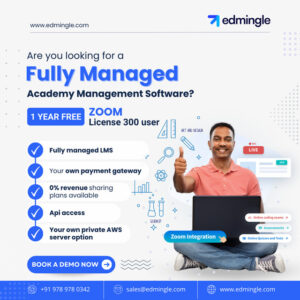
Leave a Reply